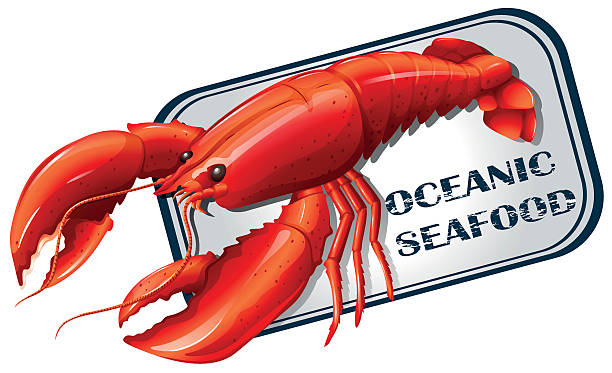Introduction
In recent months, red lobster tgi fridays closing has become a trending concern among diners and investors alike. This double wave of closures at major sit‑down chains is reshaping the casual dining landscape. In this article, we explore why red lobster tgi fridays closing is happening, what it means for consumers and landlords, and where casual dining might be headed.
Market Trends Behind red lobster tgi fridays closing
Inflation and Consumer Shift
Rising food prices and reduced disposable income have pushed diners to prioritize cheaper fast‑food or home cooking. Full‑service restaurants are losing foot traffic to drive‑thru and fast‑casual establishments. This consumer pivot is a key factor driving red lobster tgi fridays closing edition.cnn.comkeyt.com.
Pandemic Aftereffects
The COVID‑19 pandemic left scars. Reduced dine‑in capacity, labor shortages, and supply chain disruptions remain challenges. Chains like Red Lobster and TGI Fridays never fully rebounded, accelerating red lobster tgi fridays closing trends apnews.cominvestopedia.com.
Financial Pressures on Red Lobster
Shrimp Strategy Missteps
Red Lobster’s famed “endless shrimp” promotions drained profits and failed to drive sustainable customer loyalty. Leadership later admitted that this strategy contributed to its decline—illustrating one cause behind red lobster tgi fridays closing edition.cnn.com.
Bankruptcy & Chapter 11
Red Lobster declared Chapter 11 earlier this year, closing dozens of restaurants. Under Fortress Investment Group, the brand is restructuring and pivoting, but still faces community backlash over red lobster tgi fridays closing the-sun.com.
TGI Fridays Under the Spotlight
Chapter 11 Filing
TGI Fridays also sought Chapter 11 protection in November 2024. U.S. locations dropped from nearly 270 to under 170 in months, marking a sharp phase of red lobster tgi fridays closing apnews.comnypost.com.
Lease Voids & Location Shutdowns
Many franchise leases were voided, accelerating the number of closures. These shutdowns are part of the broader red lobster tgi fridays closing narrative.
Combined Effect of red lobster tgi fridays closing
Together, Red Lobster and TGI Fridays have shuttered over 175 locations. Landlords are repurposing these prime real estate assets for fast‑food chains and banks edition.cnn.comkeyt.com.
What Fries, Shrimp Patrons Should Expect
Real estate turnover
Closed locations are being taken over by drive‑thru heavyweights like Chick‑fil‑A, in‑n‑Out and First Watch—that signals a shift away from sit‑down experiences keyt.comwral.com.
Rise in fast‑casual alternatives
Consumers are flocking to fast‑casual chains (Chipotle, Chick‑fil‑A), which offer efficiency and comparable taste, reinforcing the red lobster tgi fridays closing phenomenon.
How Brands Are Responding

Menu reinvention
Post‑bankruptcy, Red Lobster is focusing back on lobster and crab quality, improving service, aiming to prove value beyond endless shrimp the-sun.com.
Ghost kitchens & restructuring
TGI Fridays is testing ghost kitchens and refining its footprint to survive as pressures from red lobster tgi fridays closing persist apnews.cominvestopedia.com.
Future Outlook for Casual Dining
The casual dining model is evolving. Recovery will require leaner operations, hybrid formats, and reinvention. Whether Red Lobster and TGI Fridays can regain relevance remains to be seen—but their struggles highlight a systemic industry shift.
Read Also:. caricatronchi
Conclusion
The ripple effects of red lobster tgi fridays closing are profound and widespread. Two iconic casual‑dining chains shuttering over a hundred locations signals more than just financial distress—it represents a structural shift in American eating habits and real estate usage. Consumers are shifting toward faster, leaner, and more affordable dining options. In response, brands like Red Lobster and TGI Fridays are being forced to rethink everything: site strategy, menu offerings, and business models. Red Lobster’s retreat from endless shrimp to higher‑quality crustaceans shows it’s attempting to reconnect with diners seeking real value. Meanwhile, TGI Fridays’ investment in ghost kitchens and streamlined footprints reflects a pivot to cost‑effective delivery models aligned with modern consumption trends.
Yet, the impact runs deeper than strategy. Mall and plaza owners are racing to re‑lease vacant properties to fast‑casual and quick‑service chains that promise higher profits per square foot. Meanwhile regional chains and incubate‑backed brands are stepping into this void, using the openings created by red lobster tgi fridays closing to expand rapidly. As these shifts take hold, casual dining’s old guard is facing a survival of the fittest. Those who adapt—by trimming real estate, embracing digital, improving food quality, and innovating service—will stay relevant. Others risk being written off as relics. What’s clear is that casual dining’s next chapter will look dramatically different from its heyday. While closures like red lobster tgi fridays closing are painful, they may also pave the way for a more resilient, modern industry that better aligns with today’s economic and consumer realities.
FAQs
What led to red lobster tgi fridays closing multiple locations?
A mix of prolonged pandemic effects, rising costs, weak promotions, and consumers shifting toward cheaper fast‑casual spots.
Are any Red Lobster or TGI Fridays still open?
Yes, both chains continue operating numerous locations. The closures reflected underperforming units within leaner portfolios.
What replaces former Red Lobster or TGI Fridays buildings?
Drive‑thru fast‑food outlets, fast‑casual concepts, banks, or fitness studios are commonly taking over those sites.
Will Red Lobster and TGI Fridays recover?
Each is restructuring—Red Lobster via focused menu updates, TGI Fridays through Chapter 11 and ghost‑kitchen models. Recovery depends on execution.
How does this trend affect consumers?
Diners have fewer full‑service choices locally but more fast and affordable alternatives. It signals an industry pivot toward convenience.




